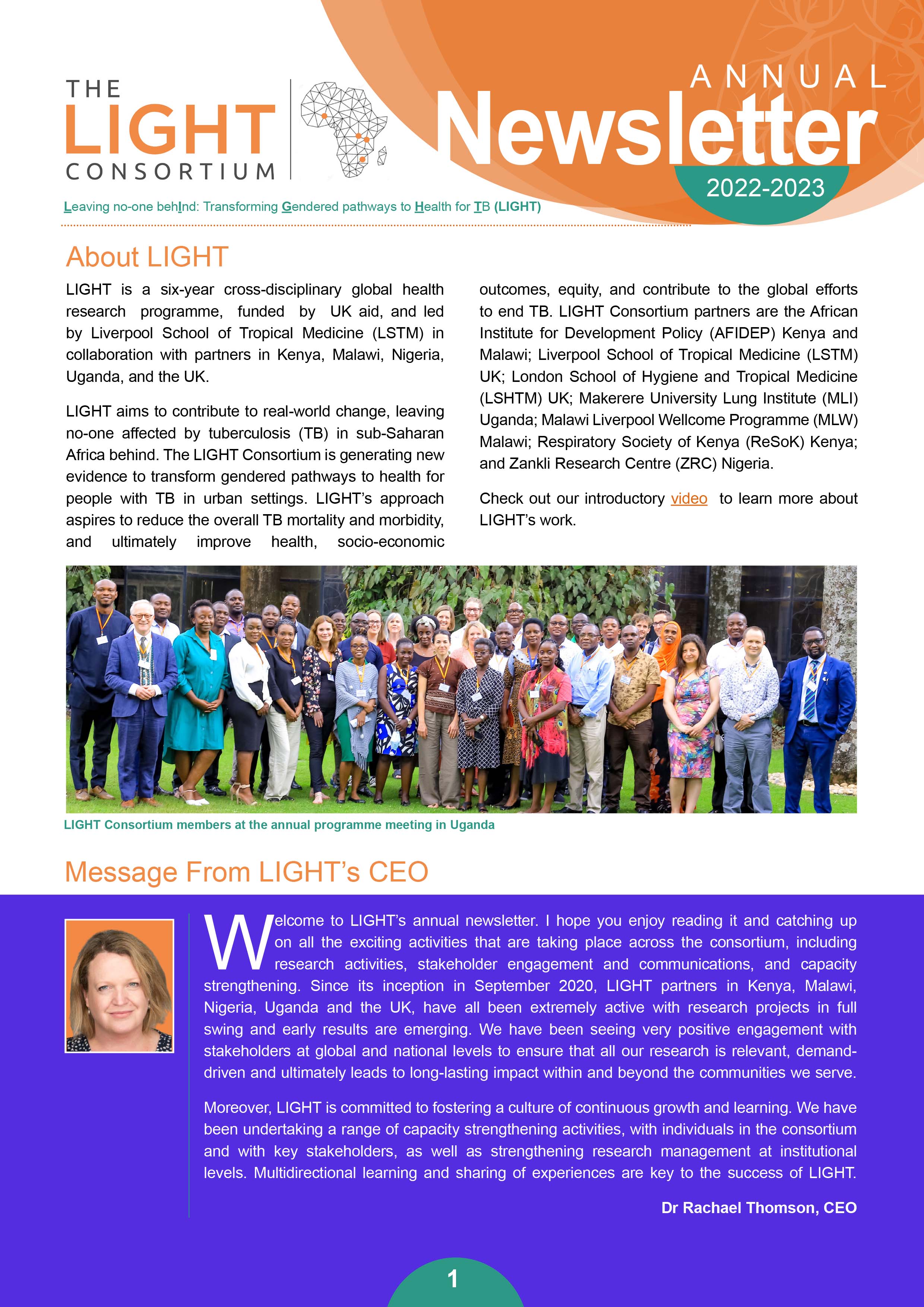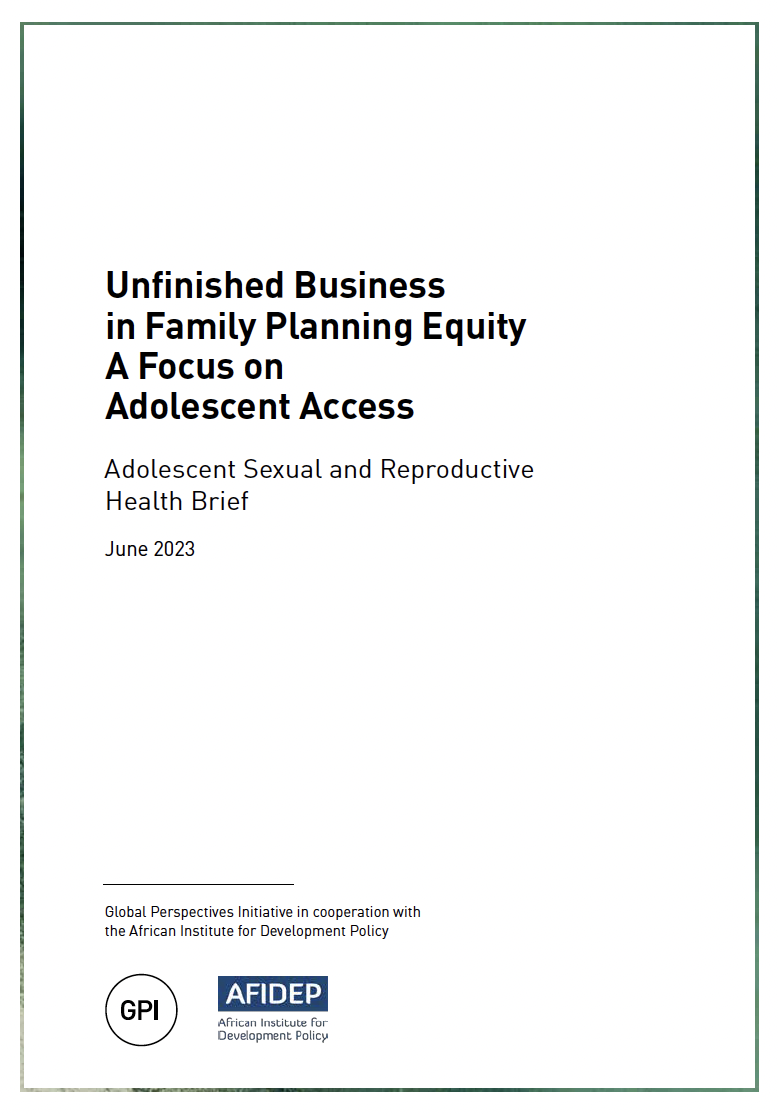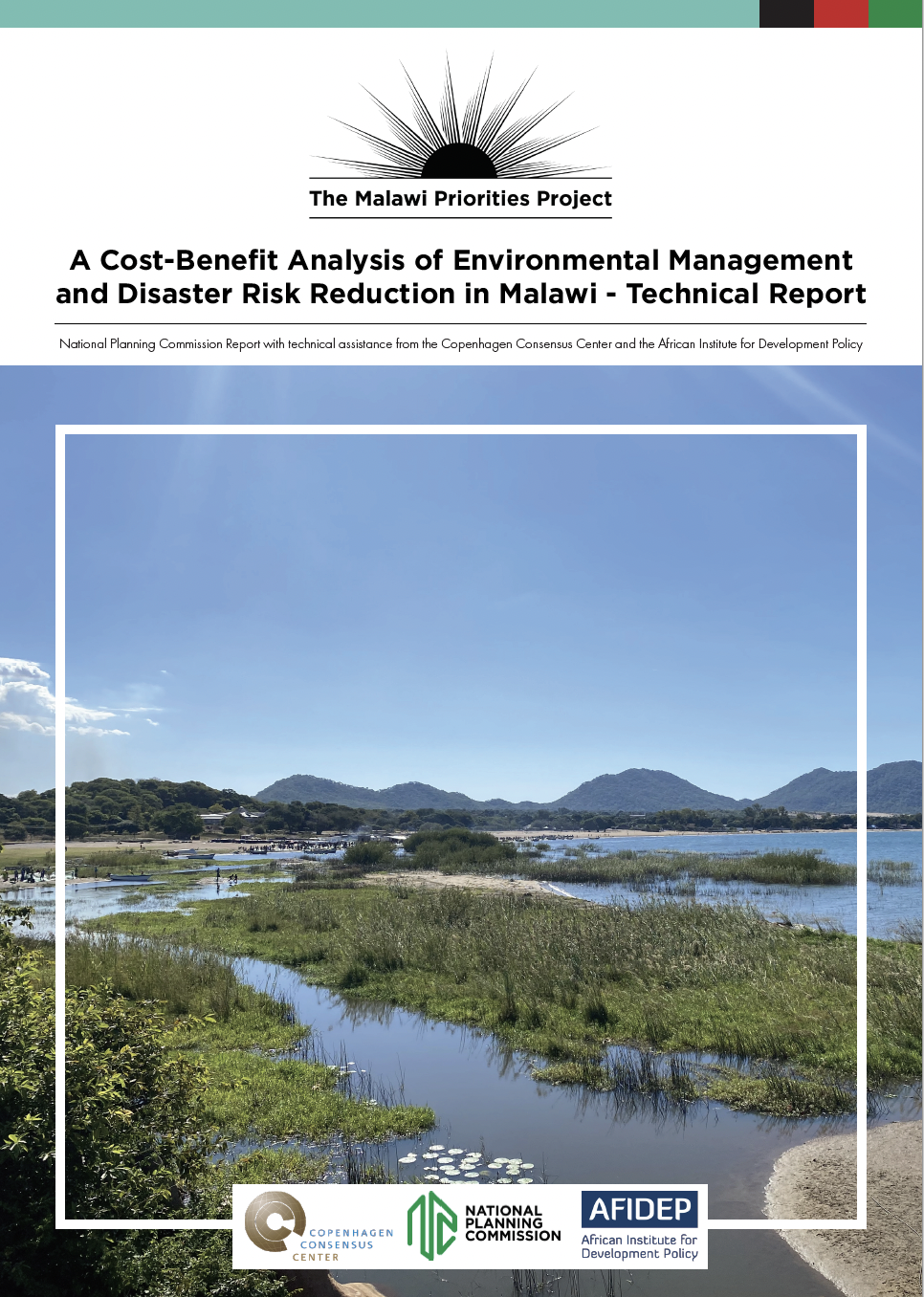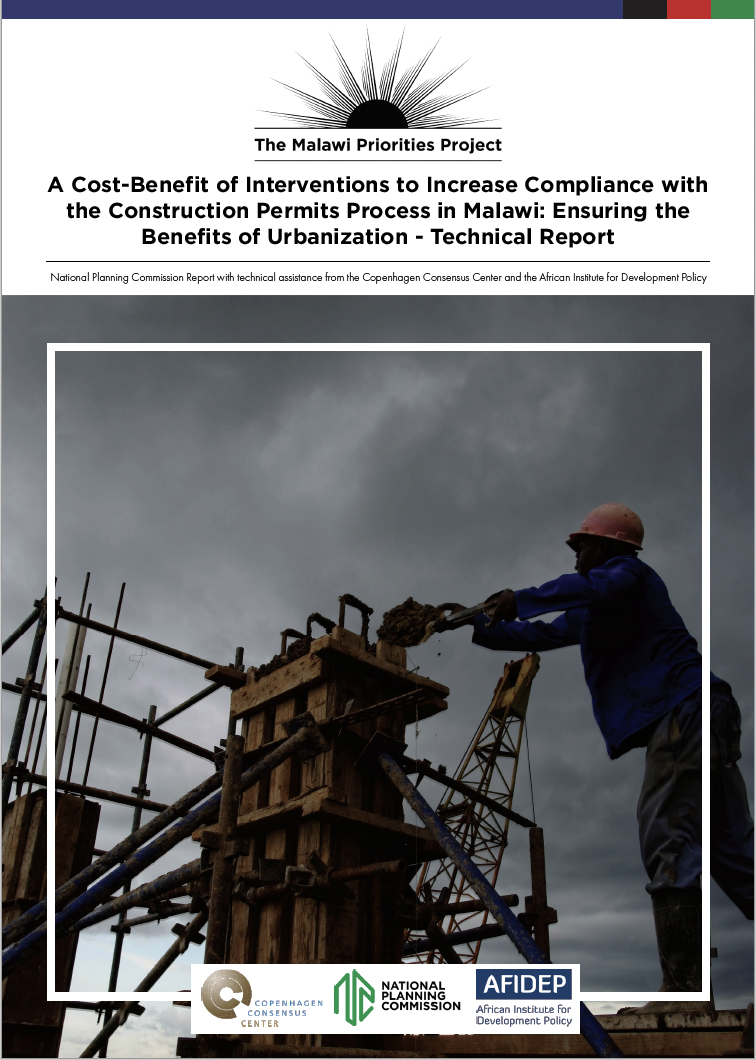Research Reports

To complement the quantitative and modeling research, the LIGHT Consortium utilised qualitative participatory action research methods in partner countries to actively engage communities affected by TB in data collection, analysis, dissemination and dialogue with decision makers. These communities included individuals with lived experiences, their caregivers, family members, and healthcare workers. This participatory approach has been instrumental in co-creating solutions, shaping and informing person-centred, gender-responsive approaches to TB prevention and care. By involving communities directly, the consortium has highlighted the value of participatory methods in addressing complex issues including challenges of TB care across diverse settings. This engagement also strengthened understanding […]

The LIGHT Consortium’s Annual Newsletter 2022-2023 highlights key activities that took place over the year across the consortium. Activities include research activities, stakeholders engagement, communications and capacity strengthening activities. Read more:

Family planning and reproductive health are a persistent challenge on the African continent, for women and their families, but also for societies and their economic development. High birth rates in Sub- Saharan Africa pose at least as great of a challenge as the shrinking populations do for Europe and other parts of the Global North. During the years of the pandemic, Covid-19 pushed many things into the background: other diseases were neglected, and medications and vaccinations were difficult to access. Sexual health, women’s medical care and family planning were among those severely affected. We wanted to know how sexual and […]

The Botswana DD Roadmap provides an overarching framework to guide the country’s long-term development aspirations of transitioning into a high-income status as articulated in the country’s Vision 2036. This document identifies priority interventions enabling the country to harness the demographic dividend, hence achieving the transformation enshrined in Botswana’s long-term development aspirations.

This paper provides an overview of some of the common tools and methodologies that are used to estimate and analyse the demographic dividend, while also reviewing the extent to which some of these methodologies are able to respond to the types of issues confronted by policymakers in the Eastern and Southern Africa region. Secondly, the paper provides a more detailed look at two of the key methodologies used to analyse the demographic dividend in the region, namely the DemDiv model and National Transfer Accounts (NTA).

The demographic dividend (DD) paradigm has become an exciting development agenda but there is a risk that it could end up as a lost opportunity and fail to bring about much change in the way development business is done in the region and across the continent. As noted earlier, countries have applied these lessons at varying levels and with varying results and there is considerable scope for cross-country learning. As a region and individually, East and Southern African Region (ESAR) countries have achieved some success but there are serious gaps for most countries to take the DD from policy/strategy document to action.

The capture fisheries sector in Malawi provides employment, income, and food and nutrition for communities around lakes, major rivers and beyond. Yet the use of destructive fishing gears and methods, which has resulted falsely in rising trends in total catch and catch per unit effort beginning 2006 is severely endangering the sustainability of the industry. The most common illegalities in the fishing industry are the use are monofilaments and under-meshed nets. Evidently, rents in the fishery are dissipated as some fishers have started complaining about making loses when they go on fishing expeditions. By estimating the sustainable yield function and […]

The report recommends the government improve tax e-filing and provide ‘nudges’ for firms to pay their taxes across Malawi. The MRA has already begun planning for this intervention, and this report provides economic evidence that the benefits of implementation exceeds cost by a factor of 7. The intervention would reduce the tax compliance costs of MSMEs by 65% – saving compliant businesses a total of MWK 5,271 million per year in the long run. The MRA would also see savings of MWK 2,570 million annually. The intervention requires an upfront expense of MWK 1,082 million for the ICT improvements, and ongoing costs of MWK 840 million for operating the system and MWK 57 million for tax nudges.

The analysis recommends prioritizing improvements in Malawi’s Early Warning Systems (EWS) as a more effective use of marginal resources toward improving Malawi’s resilience to floods. Overall, this intervention would yield 16 kwacha in benefits for every kwacha invested, indicating the high socio- economic efficiency of the EWS improvements for Malawi.

This study conducts cost-benefit analyses on two interventions that can address the challenges of insufficient water supply, particularly for those living in informal settlements. The first intervention is to substantially increase the supply of water by 230 million L daily with a new facility from the Shire River. This is one of the future projects identified by the Blantyre Water Board and is currently only 47% financed with a loan from India’s Exim Bank (BWB, 2021). The second intervention is the installation of E-Madzi kiosks across Blantyre, similar to the ones that have recently been rolled out in Lilongwe. These E-Madzi kiosks are automated water dispensers that replace in-person kiosks while ensuring increased access to water and lowering water costs by 65%.

More than half of urban residents live in informal settlements or in informal dwellings in areas designated for housing. While regulations and housing permits are critical, compliance with these regulations is of equal importance. Non-compliance in Malawi’s construction sector is rooted in three challenges: poverty; the costs of compliance imposed on the private sector; and, a lack of transparency in the permit-provision process. The proposed interventions reduce the costs of building low-income housing: they create access to architectural plans that make houses more resilient; they reduce the direct cost of the construction permit process and they reduce the time associated […]

Malawi faces a wide range of barriers to achieving structural transformation of its economy and increasing the level of employment among the country’s large youth population. These barriers include infrastructure gaps, low access to finance, weak governance and regulations, inefficient markets, and low agricultural productivity among others. This analysis has focused on strengthening market linkages in agro-processing value chains and facilitating SMEs’ access to formal finance.

